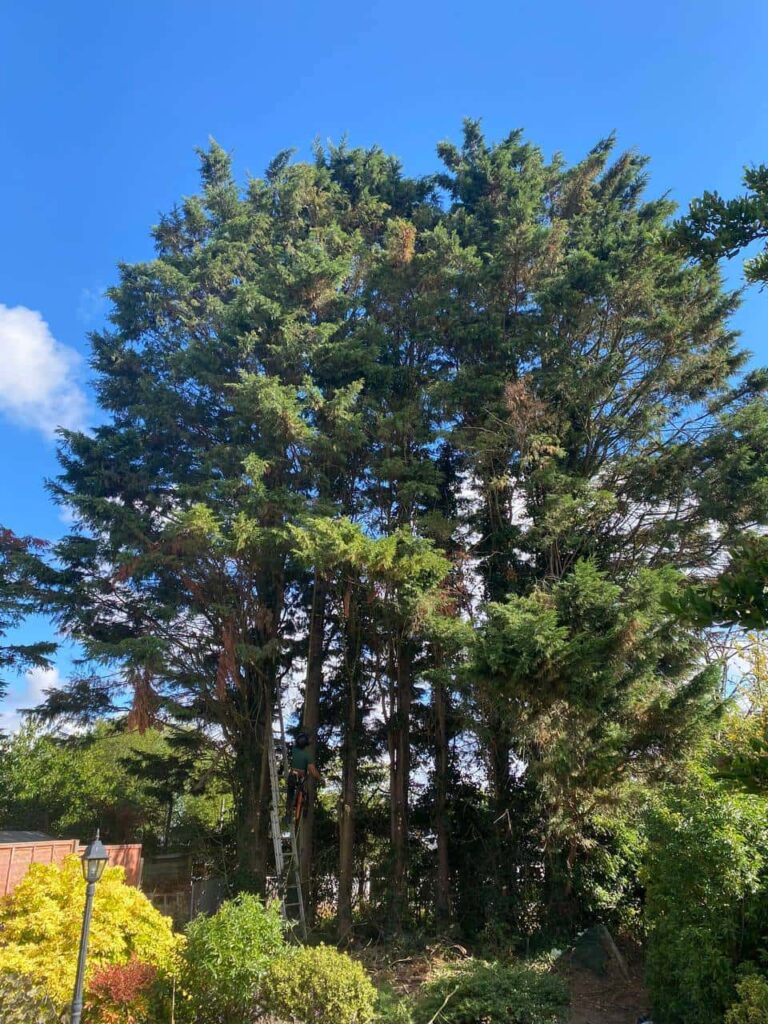Introduction: Maintaining the health and aesthetics of trees is essential for preserving their beauty, promoting growth, and ensuring safety. Two common tree care practices often mentioned are pruning and trimming. While these terms are sometimes used interchangeably, they refer to distinct techniques with specific purposes. In this blog post, we’ll explore the differences between pruning and trimming and when to use each method, brought to you by Newmarket Tree Surgeons.
Pruning:
Pruning involves selectively removing branches or stems from a tree to improve its structure, health, and appearance. This technique typically removes dead or diseased branches, promotes new growth, and shapes the tree for aesthetic purposes. Key aspects of pruning include:
- Removing Dead or Diseased Branches: Pruning allows arborists to identify and remove dead, diseased, or damaged branches that pose a risk to the tree’s health or safety.
- Thinning Out Overcrowded Branches: By selectively removing branches that are crossing, rubbing, or overcrowded, pruning helps improve air circulation and sunlight penetration within the tree canopy.
- Promoting New Growth: Pruning encourages the development of new growth by stimulating dormant buds and directing the tree’s energy towards healthy, vigorous branches.
- Shaping and Training: Pruning can shape the tree’s structure, directing growth away from structures or power lines and creating a desired aesthetic appearance.
Trimming:
Trimming, also known as tree trimming or tree cutting, involves the removal of overgrown or excess foliage to maintain the tree’s size, shape, and appearance. While pruning focuses on the selective removal of specific branches, trimming is a more general practice aimed at shaping the tree’s overall canopy. Key aspects of trimming include:
- Maintaining Size and Shape: Trimming is often performed to control the size and shape of the tree, preventing it from encroaching on structures, obstructing views, or posing safety hazards.
- Removing Excess Foliage: Trimming removes excess foliage, including overgrown branches, shoots, or leaves, to improve the tree’s appearance and reduce its density.
- Creating Clearance: Trimming provides clearance around buildings, roads, sidewalks, and power lines, ensuring safety and preventing damage or interference.
- Promoting Health and Vigor: Regular trimming helps maintain the health and vigour of the tree by removing dead or weak branches and stimulating new growth.
Conclusion: While pruning and trimming are essential tree care practices, it’s important to understand the differences between the two techniques and when to use each method. Pruning focuses on selective branch removal to improve structure, health, and growth, while trimming involves the general shaping and maintenance of the tree’s size and appearance. By employing the right technique at the right time, you can ensure your trees’ health, safety, and beauty for years to come.
Call us on: 01638 591 692
Click here to find out more about Newmarket Tree Surgeons
Click here to complete our contact form and see how we can help with your tree’s needs.

